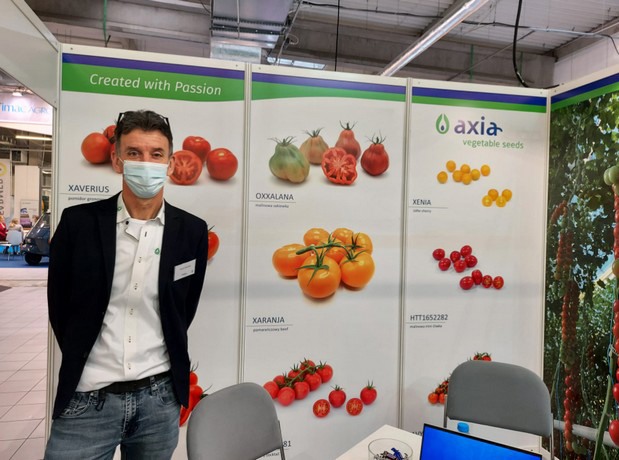Every grower is dealing with increasing energy prices, currently. Some are coping better than others, depending on which energy source they use. We have seen how a lot of greenhouses in Turkey, for instance, use geothermal energy, which is much cheaper than gas. However, not many growers up in the northern countries use that, which is why they might feel the pressure more. This is the case for Poland and Polish growers for instance. "The Polish market is very dependent on coal," says René Zwinkels from Axia Seeds. "At the moment, coal is four times as expensive as it used to be for heating greenhouses. Because of that, the produce would be way too expensive to sell, and the issue is that traders and supermarkets wouldn't pay the price difference."
The sun will come out
René explains that Polish growers would usually plant in December, but family companies are now eyeing the end of February-first week of March for that. "In this way, they wouldn't need that much heating, thus saving some energy costs. Big companies are planting mostly two weeks later and not more. They have coal till March. At the same time, Polish growers mostly depend on the local market. I think for 80%," René points out.

René Zwinkels at the TSW, Warsaw,
This means that it is expected that more tomatoes will be coming to Poland from countries such as Italy, Spain, and Morocco, to name a few. "Polish growers are already used to, say, the competition coming from those places. Yet, those tomatoes are mainly TOV or cherry tomatoes. On the other hand, 70% of Polish tomato production is pink tomatoes. 160-200 grams of ripe and tasty pink tomatoes. The import for that is very limited, with just a small quantity coming from Spain. That means that there's still room for opportunities for growers, even though the product might be a little short this winter. At the same time, there are ways to keep up with that, and Polish growers are very resilient."
Same production, less energy
René and Kasia Kaczmarek of Axia Seeds are indeed supporting the Polish market not only with the right varieties but also and especially with growing and climate training. "We know the market and where you can sell your produce," he says. "For instance, if you can sell Polish tomatoes in the UK, we'd know. We are very much aware of the market and know the demand. The right varieties with good size and taste, like Xandor, Joannax, Xantara, and Axidady, to name a few varieties of Axia in the loose picking segment. In the beef segment, we have Xanteo and Maxibel. In the TOV-segment we have Xaverius, Macxize, and Provenax. We also have a lot of varieties in the Cherry and Cocktail segment. The Axia team is composed of former growers who have a passion for growing. We don't have blood in our veins. That's actually tomato juice," he chuckles.
Relying on more knowledge on how to better get through these trying times can be quite critical, especially because it's quite a challenge to keep up the same production with less energy. "But it's possible to do that," René remarks. "If a grower can invest, even a little bit, one extra screen can already be of great help. But mostly, it's about the timing of energy. For instance, when does a grower heat the greenhouse? When don't they do it? Can they do without? For instance, using co-generators would allow a grower to heat the greenhouse without any rising costs. This would be a sort of next step.
"I had some interesting conversations last week with some Polish growers. It's not easy, but they are keeping up. Polish horticulture has been developing super fast, and it's just incredible what they have achieved over the last ten years. I know a lot of people are looking at these energy prices as a threat. But you need to make it into a challenge. Which puts you in that mind space where you go, 'alright, let's see what we can do to get through this.' If you keep your eyes open and talk to people here in Poland, you'd see the huge development and feel the positive vibe."
For more information: 
Axia Vegetable Seeds
www.axiaseeds.com
info@axiaseeds.com
